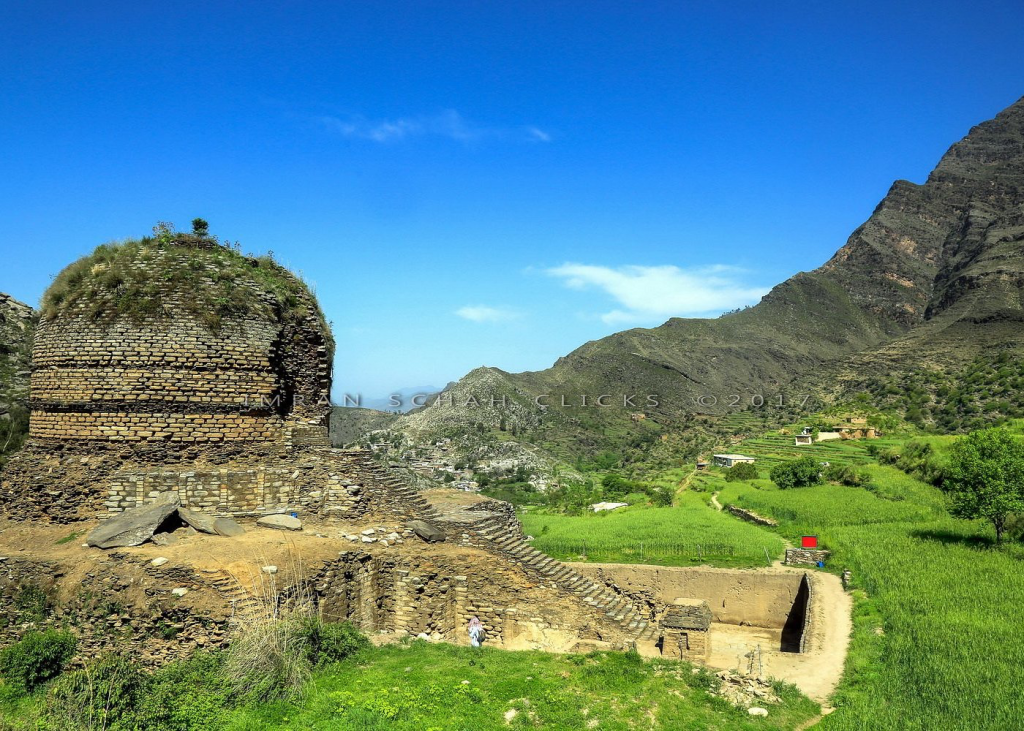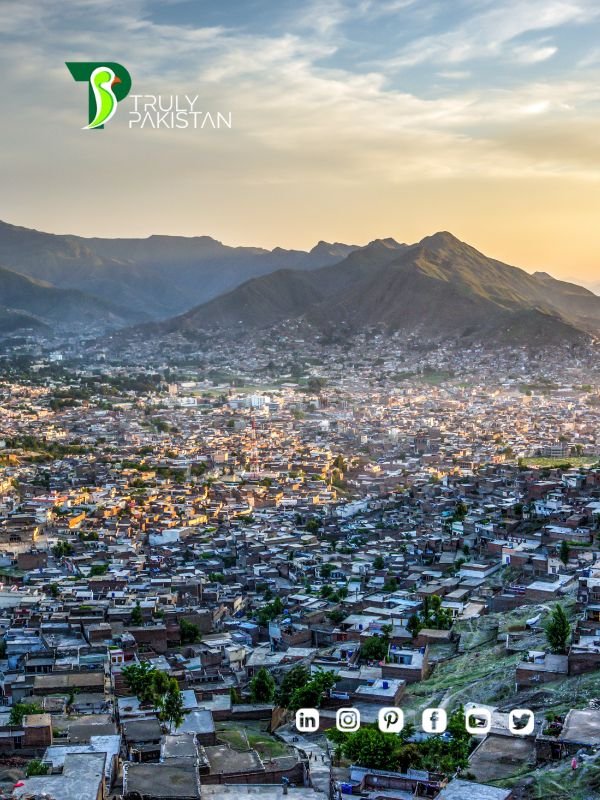Swat Saidu Sharif: Complete Guide to Pakistan’s Heritage Capital


Nestled in the heart of the Swat Valley, Swat Saidu Sharif is more than just an administrative capital—it is the cultural and archaeological heartbeat of northern Pakistan. From Buddhist stupas that date back over two millennia to the vibrant Swat Museum that safeguards Gandhara art, this city embodies layers of history, faith, and tradition.
Travelers are drawn to Saidu Sharif for its dual charm: the serenity of its heritage and the practicality of being the gateway to Swat’s valleys, shrines, and palaces. Whether you are a history enthusiast, a cultural traveler, or simply looking for an authentic destination, Saidu Sharif offers a blend of discovery and accessibility rarely found elsewhere.
Table of Contents
Introduction to Swat Saidu Sharif
Where is Swat Saidu Sharif Located?


Saidu Sharif is located in the Swat District of Khyber Pakhtunkhwa, Pakistan, about 8 kilometers south of Mingora. Positioned at an elevation of 970 meters (3,180 ft), the city enjoys a moderate climate and serves as the administrative hub of the region. Its strategic location makes it an ideal base for exploring Swat’s archaeological sites, cultural landmarks, and scenic valleys.
- Coordinates: 34.74° N, 72.35° E
- Distance from Islamabad: Approximately 200 km (6–7 hours by road)
- Nearest Major City: Mingora (15–20 minutes’ drive)
Why Saidu Sharif is Known as the Heritage Capital of Swat
The city is often called the “heritage capital” because it houses the Swat Museum, ancient stupas like Butkara, and the shrine of Saidu Baba—the revered Akhund of Swat. These landmarks represent centuries of cultural exchange, from the Gandhara Buddhist period to the Islamic and princely state eras. Today, Saidu Sharif stands as both a living city and an open-air archive of South Asian history.
Historical and Archaeological Significance of Swat Saidu Sharif
From Baligram to Saidu Sharif: Name and Evolution
Historically, the area was known as Baligram. Over time, it was renamed Saidu Sharif in honor of Saidu Baba, the 19th-century saint who played a central role in uniting Swat’s people under spiritual and social guidance. This evolution of names reflects the region’s layered history—an intersection of ancient Buddhist roots and later Islamic leadership.
The Gandhara Civilization and Swat Saidu Sharif


Saidu Sharif is a cornerstone of the Gandhara civilization, which flourished between the 2nd century BCE and the 10th century CE. Archaeological excavations have uncovered Buddhist stupas, monasteries, and sculptures that blend Hellenistic and South Asian art styles. These finds, many of which are preserved in the Swat Museum, highlight the city’s global significance in the study of Buddhist history and art.
Buddhist Heritage: Stupas, Monasteries, and Sculptures
Archaeological missions in Swat Saidu Sharif have revealed a treasure trove of Buddhist heritage. Among the most prominent are stupas—monumental structures built to preserve relics of the Buddha. Monasteries and vihāras once thrived here, attracting monks and scholars from across Asia. The sculptures discovered in these sites, crafted in the Gandhara art style, show intricate details of Buddhist iconography influenced by Greek and Persian traditions.
Major Archaeological and Cultural Sites in Swat Saidu Sharif
Saidu Sharif Stupa Complex
The Saidu Stupa, dating back to the 2nd century BCE, is one of the oldest and most studied Buddhist monuments in the region. Excavated by Italian archaeologists in the mid-20th century, the site offers visitors a glimpse into early Buddhist religious practices. The stupa stands on a raised terrace, and its surrounding structures once housed monks who lived and studied here. Though partially in ruins, it remains a key highlight for heritage travelers.
Butkara Buddhist Sites near Saidu Sharif


Just a short distance from Saidu Sharif lies the Butkara I complex, another archaeological gem. This site consists of a main stupa surrounded by smaller votive stupas and monastery remains. Excavations revealed relics, inscriptions in the ancient Kharosthi script, and exquisite stone carvings now housed in the Swat Museum. Butkara is especially important for understanding the evolution of Buddhist architecture in the Gandhara region.
Swat Museum and the Gandhara Collection
The Swat Museum, located in the heart of Saidu Sharif, preserves more than 3,000 artifacts, including sculptures, coins, inscriptions, and household objects from the Gandhara era. The museum is divided into thematic galleries that showcase Buddhist art, Islamic heritage, and ethnographic collections from the Swat Valley. For researchers and casual visitors alike, the museum serves as the perfect starting point before exploring nearby archaeological sites.
- Highlights: Stone Buddha statues, Indo-Corinthian capitals, ancient coins
- Opening Hours: 9 AM – 5 PM (closed Fridays)
- Entry Fee: PKR 50 (locals), PKR 200 (foreigners)
Saidu Baba Shrine and Religious Heritage


The shrine of Saidu Baba, the revered saint who gave the city its name, is a center of spiritual devotion. Pilgrims visit the site to pay respects and participate in religious gatherings. The adjacent mosque, built in white marble, reflects a serene architectural style distinct from the region’s Buddhist remnants, symbolizing the shift from ancient Gandhara to Islamic traditions.
Former Royal Palace and Traditional Architecture
Saidu Sharif also served as the administrative seat of the Wali of Swat, Miangul Abdul Wadud. The former royal palace, although not fully open to the public, stands as a reminder of Swat’s princely state era (1915–1969). Around the city, visitors can still see traditional wooden houses, carved doorways, and mosques that highlight the craftsmanship of Swat’s local architecture.
Planning Your Trip to Swat Saidu Sharif
Best Time to Visit Swat Saidu Sharif
The best months to visit Swat Saidu Sharif are from April to October, when the weather is pleasant and road access remains clear. Summer (June–August) offers mild temperatures compared to the plains of Pakistan, while spring and autumn are ideal for sightseeing and photography. Winters can be cold, with snowfall in nearby high-altitude areas, which may affect travel.
How to Reach Saidu Sharif from Islamabad and Peshawar
Saidu Sharif is approximately 200 km from Islamabad and 150 km from Peshawar. The most common route is via the M1 Motorway followed by the Swat Expressway. Travelers can use buses, private cars, or shared vans from major cities. Direct flights occasionally operate to Saidu Sharif Airport, though schedules vary seasonally.
Transport Options within Swat Saidu Sharif
Within the city, visitors can rely on local taxis, rickshaws, or private rentals. Distances between the museum, stupa sites, and shrines are short, making half-day or full-day circuits manageable. Hiring a local guide is recommended for archaeological sites to gain context and avoid restricted areas.
Accommodation and Hotels in Swat Saidu Sharif
Saidu Sharif and nearby Mingora host a variety of accommodations, from budget guesthouses to mid-range hotels. Some heritage travelers prefer staying near Mingora’s bazaar for easy access to restaurants and shops, while others opt for quieter lodges around Saidu Sharif itself.
Food, Culture, and Local Hospitality
The local cuisine includes chapli kebabs, lamb karahi, and traditional Swati pulao. Visitors are often welcomed with warm hospitality, especially in family-run guesthouses. Respect for cultural norms—such as modest dress at shrines and polite interaction with elders—is highly valued.
Suggested Travel Itineraries for Swat Saidu Sharif
One-Day Heritage Tour in Swat Saidu Sharif
Start with the Swat Museum, then visit Butkara Stupa in the late morning. After lunch, head to the Saidu Sharif Stupa and finish your day at the Saidu Baba Shrine. This loop allows you to experience the city’s Buddhist and Islamic heritage in one day.
Two to Three Day Itinerary Including Mingora and Surroundings
Day one covers Saidu Sharif’s main sites. Day two can include Mingora’s bazaars and the White Palace in Marghazar. A third day could be dedicated to nearby valleys or Malam Jabba for skiing and mountain views. This extended itinerary balances culture with leisure.
Combining Saidu Sharif with Malam Jabba and White Palace
Many travelers combine their heritage trip with an excursion to Malam Jabba, about 40 km away, known for its ski resort and chairlifts. On the way, a stop at the White Palace in Marghazar adds royal architecture and panoramic views to the experience.
Photography and Etiquette Guidelines
Photography is generally allowed at outdoor sites like stupas, but restrictions apply inside museums. Drones require special permission from local authorities. At shrines, always ask before photographing and avoid disrupting worshippers. Modest clothing is recommended at religious and cultural sites.
FAQ on Swat Saidu Sharif
What is Saidu Sharif Famous For?
Saidu Sharif is famous for being the cultural and administrative capital of Swat, home to the Swat Museum, ancient Buddhist stupas, and the shrine of Saidu Baba.
Is Saidu Sharif Safe for Tourists?
Yes, Saidu Sharif is considered safe for tourists, especially during daytime visits. Security has improved in recent years, and tourism facilities are supported by local authorities. As always, travelers should check local advisories before visiting.
How Far is Saidu Sharif from Mingora?
The distance between Saidu Sharif and Mingora is approximately 8 km, which takes around 15–20 minutes by car or rickshaw.
What are the Main Attractions in Saidu Sharif?
Main attractions include the Swat Museum, Saidu Sharif Stupa, Butkara Buddhist sites, Saidu Baba Shrine, and remnants of the former royal palace.
When is the Best Time to Visit Swat Saidu Sharif?
The best time is between April and October, when the weather is pleasant and roads are clear for travel.
How Can I Visit Saidu Sharif Museum and Stupas in One Day?
A one-day trip can start with the museum in the morning, followed by Butkara Stupa, and conclude at Saidu Sharif Stupa in the afternoon. Hiring a guide ensures efficient travel between sites.
Are Photography and Drones Allowed in Swat Saidu Sharif?
Photography is allowed at most outdoor sites but restricted inside the museum. Drones require prior permission, and respectful etiquette is important at shrines.
Conclusion: Why Swat Saidu Sharif Should Be on Your Travel List
Swat Saidu Sharif is more than just a city—it is a living timeline of civilizations that shaped Pakistan’s history. From Buddhist stupas that trace back to the Gandhara era to the Swat Museum that protects priceless artifacts, every corner of Saidu Sharif tells a story. Combined with cultural landmarks like the Saidu Baba Shrine and the White Palace, the city bridges past and present in ways few destinations can.
Read More About: Ultimate Guide to Places to Visit in Swat with Family


Author: ZunNurain Khalid — Travel & Tourism Specialist, Founder of ExploreX Pvt. Ltd., and advocate for sustainable tourism in Pakistan. With over a decade of experience in digital marketing and destination branding, ZunNurain has worked extensively on promoting Pakistan’s natural and cultural heritage.

